Running my ThinkPad T430 with an eGPU in 2024

I probably shouldn’t have written down my notes on the eGPU setup I had years ago.
I’d be lying if I wasn’t considering remaking this setup with everything I’ve learned 6 years later.
Oops.
I got access to an allegedly-faulty AMD Radeon RX 480 and an NVIDIA GTX 1650 for free thanks to my friend, so I ordered the EXP GDC Beast v8.5c, two sorts of 6/8pin power cables, and a 12V 12A DC power supply.
The idea was to take a ThinkPad T430, bolt a GPU to it, and use it as a stationary workstation until the laptop dies or gets too slow for modern tasks. The resale value of the T430 is too low for me to justify selling it, and if there’s anyone out there who can run a T430 into the ground 5+ years from now, then it’s probably going to be me.
Quick specs:
- CPU: Intel i7-3820QM
- RAM: 16GB DDR3
- Storage: 4TB Samsung 870 QVO
Side-note: I also went ahead and replaced the thermal paste with a bootleg Honeywell PTM7950 phase-changing thermal pad. It works just as well as fresh thermal paste, but hopefully it won’t drip out if the laptop is running up-right, in a vertical laptop stand.

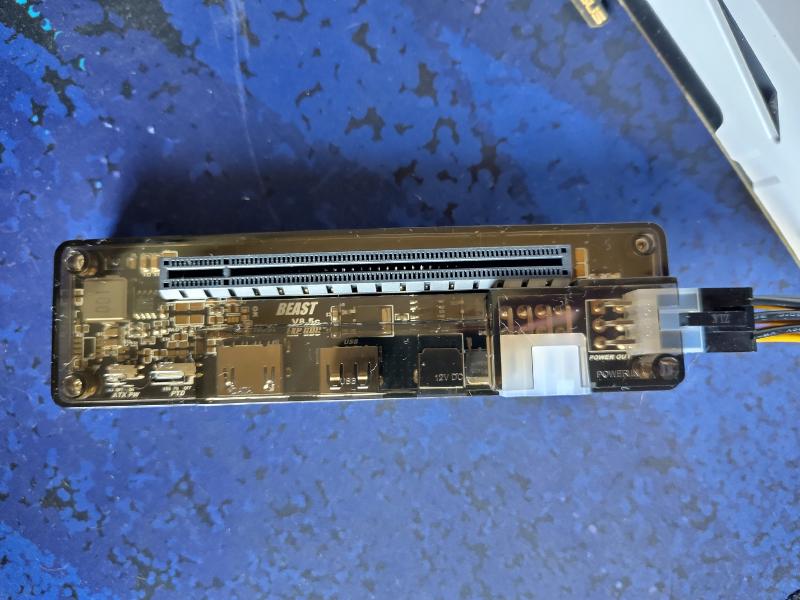
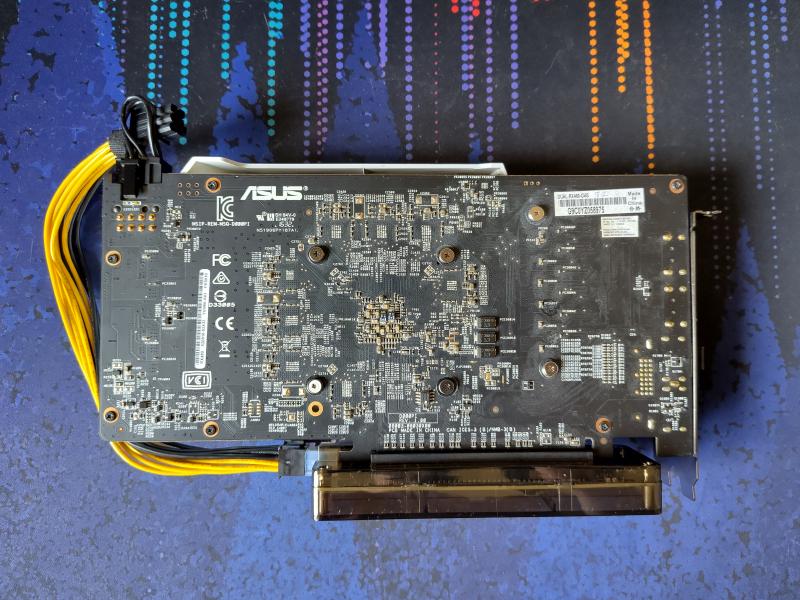
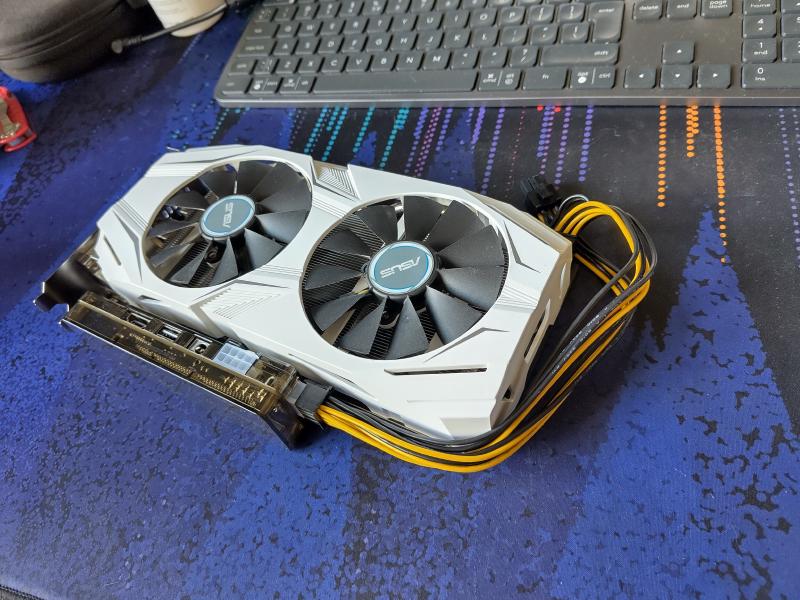
Testing
My testing with the GTX 1650 was brief, as the open source nouveau driver crashed on the Wayland desktop1, the proprietary
drivers under Fedora did not seem to work, and under Windows
the NVIDIA driver intentionally triggers the error code 43 issue. A tweak exists for the Windows issue, but
that didn’t help much either.
The AMD Radeon RX 480 seems to work well out of the box on Windows 11, plug-and-play. However, it wasn’t that stable, but that could be related to the possibly faulty GPU itself or the power supply that can barely drive it under load. Or the fact that Windows itself was running off of a 128GB Samsung USB 3.0 flash drive. Probably the latter, given that the USB stick died as a result of this experiment.
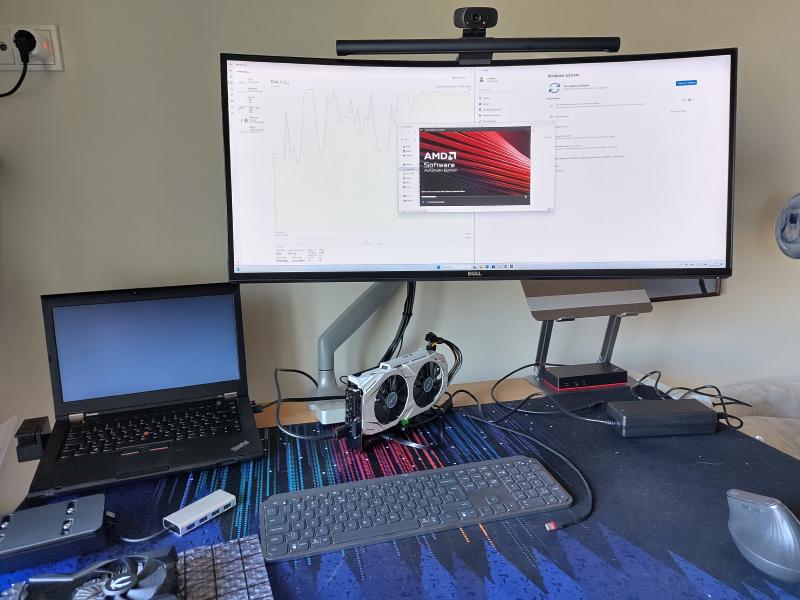
On Fedora Linux 40, I discovered that eGPU-s aren’t really plug and play. Sure, the image is there, but on my ultrawide monitor I saw a whopping 11 frames per second! Turns out that by default GNOME on Wayland doesn’t like to use the eGPU as the main rendering device, even on more legitimate Thunderbolt-based eGPU setups. It’s a common enough problem that there exist multiple solutions to this issue.
I didn’t like any of them2, so I disabled the i915 kernel driver responsible for driving the iGPU, which did the trick.
The 3440x1440p ultrawide monitor was being rendered by the eGPU and for the most part the experience was very smooth.
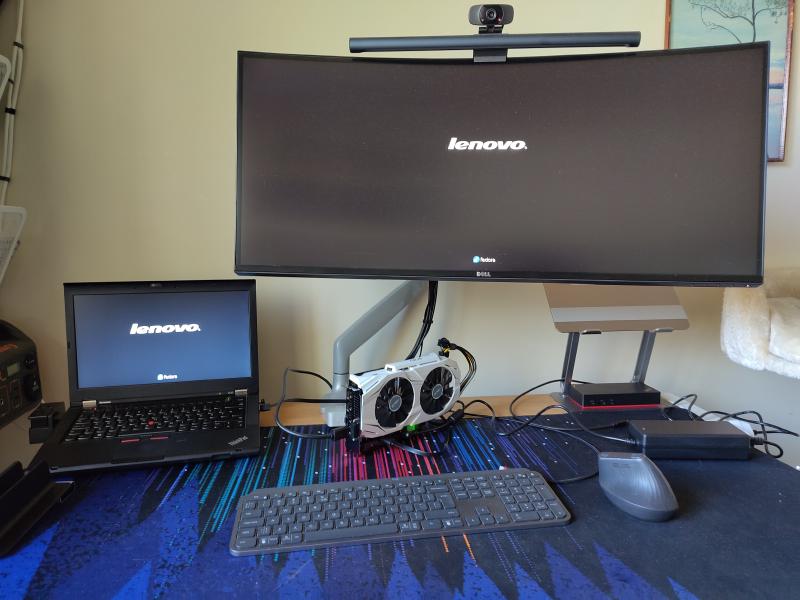
The iGPU in the T430 can also run the ultrawide monitor at 60 Hz via the DisplayPort port on the dock, but it can’t run things at 60 FPS at all times because it’s really, really weak.
The eGPU ran things much smoother, which made the whole setup feel more responsive and great to use. It’s not the fastest setup in the world, but the GUI running smoothly certainly makes it feel like one.
I didn’t have a ton of games installed for testing, but I did give Minecraft a try, and it ran just fine. The CPU was struggling when building new parts of the map, but the visuals were doing fine and I could see myself playing on this setup for hours.
There were some things that weren’t running smoothly even with the eGPU. For example, 1080p H.265 video playback was awfully
choppy. Using radeontop revealed around 80% GPU usage, so either the decoding engine is crap on this GPU, or the very limited
PCIe bandwidth and CPU-GPU data transferring is the culprit.
I also tested LibreELEC to see how it handles the eGPU and I’m happy to report that it renders Kodi on it by default, with the UI running very smoothly.
On Linux I also saw some stability issues and crashes, but those could also be down to the faulty GPU or the PSU being underpowered. I can probably rule out the latter by limiting the GPU clock speeds, and the Arch wiki has some great instructions for that. Those toggles do work, but I noticed that GNOME can be a bit choppier when the GPU switches between lower power states to higher ones.
The physical stability of this setup is questionable, especially if you use a bigger GPU. Most prefabricated cases for this eGPU adapter assume that you’re running it with an ATX/SFX PSU, so those are out of the question for me. There exist some 3D printable designs out there, but they can sometimes be very specific to a particular setup or GPU, so I’d have to design my own.
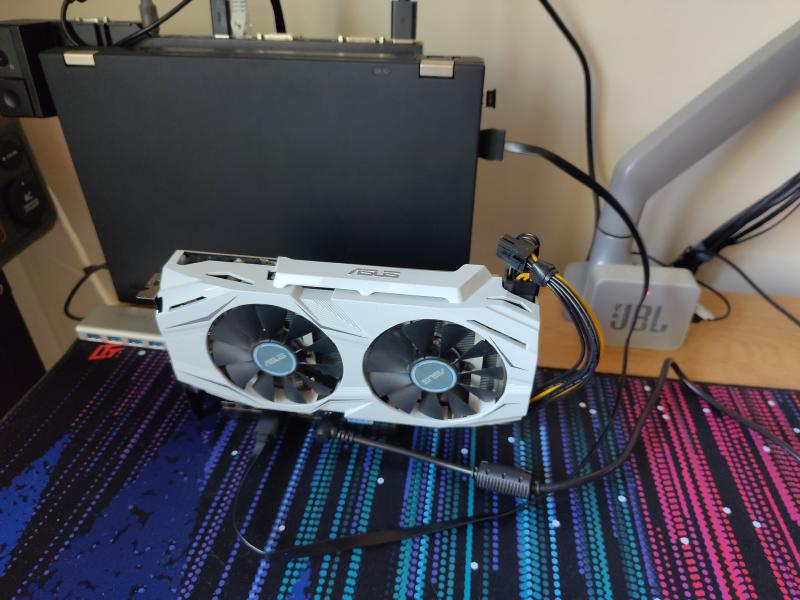
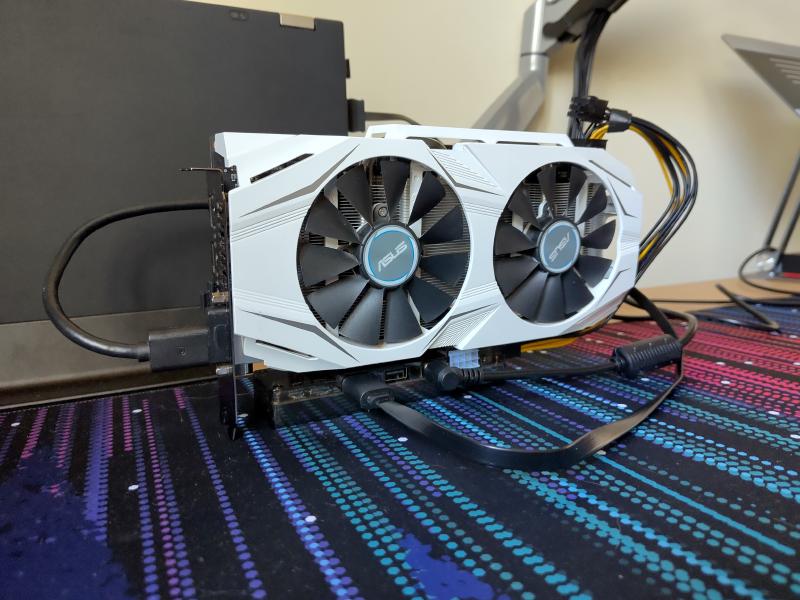
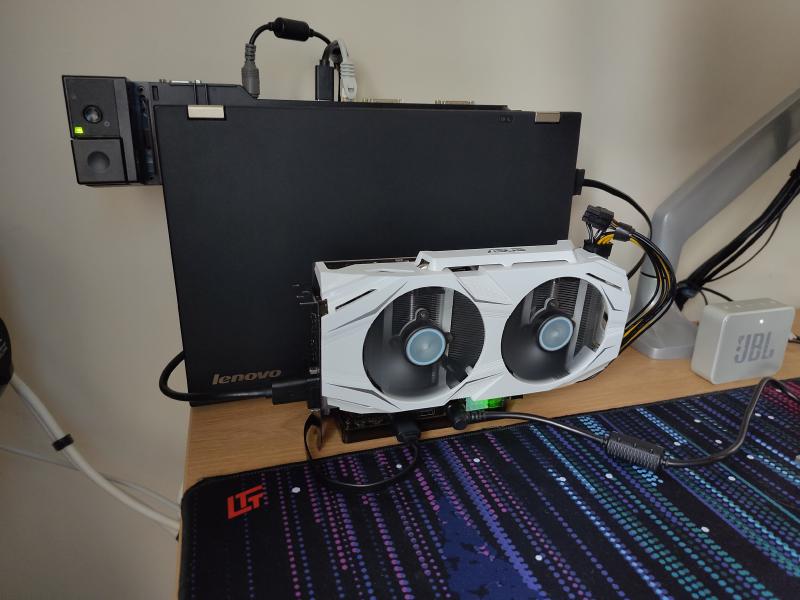
The power consumption of this setup isn’t great, unfortunately. Using a smart plug I measured the idle power of the eGPU component to be about 20W. Typical desktop usage and video playback results in around 50W and peaks around 120-130W, which is right on the limit of the shoddy PSU I’m using.
If I had the choice to pick any GPU for this setup, then I’d likely opt for a modern AMD GPU that didn’t require additional power via the 6/8 pin power connector as that option would likely be a lot more efficient while yielding similar performance.
I ended up disassembling the setup in the end, partly because I misdiagnosed a Mesa bug to be a GPU issue, and because the RX 480 really was acting weird from time to time, even with LibreELEC.
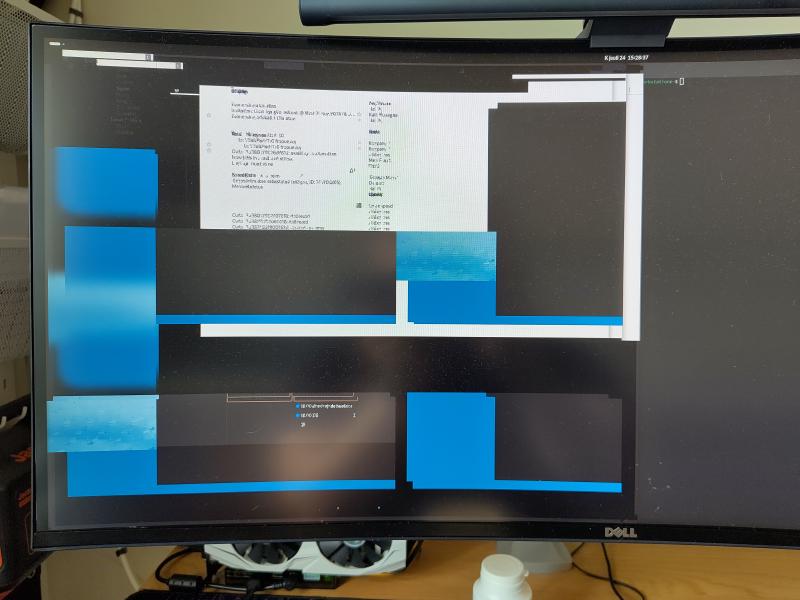
Not all experiments end up being successful.
Conclusion
I think that these types of eGPU adapters are great even in 2024, but only for a small number of very specific use cases, and with GPU-s that actually work.
If you already have an older laptop around, and a compatible spare GPU collecting dust, then this setup will make sense for desktop or media playback machines, and perhaps gaming if your demands are not very high.
I don’t suggest building this setup from scratch, it’s probably not worth the money and hassle. Used gaming PC-s that have similar specifications to this eGPU build, but with no funny PCIe bandwidth limitations, go for less than 200 EUR at this point.
Subscribe to new posts via the RSS feed.
Not sure what RSS is, or how to get started? Check this guide!
You can reach me via e-mail or LinkedIn.
If you liked this post, consider sharing it!